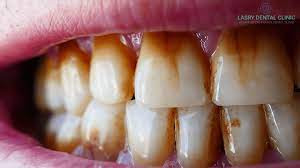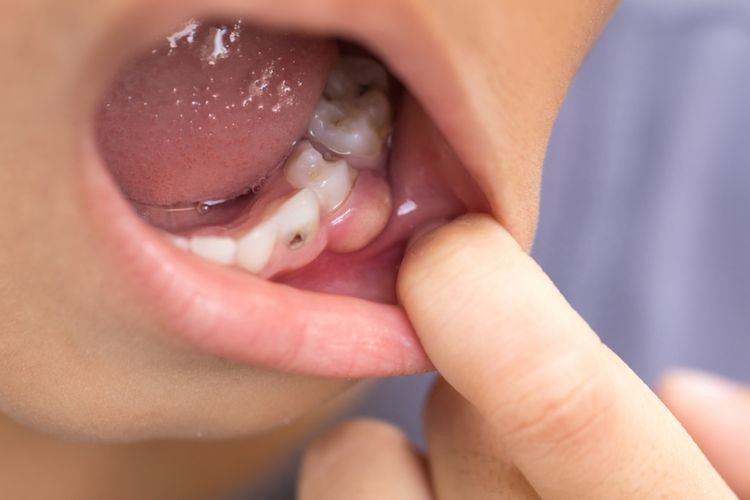Definition
Dental erosion, or tooth erosion, is the process by which the outer covering of the teeth, known as enamel, is gradually removed due to exposure to acidic substances found in food, beverages, or stomach acid. This condition arises from a lack of understanding and attentiveness to dental health, resulting in infrequent dental check-ups.
The enamel layer is a rigid and translucent tooth structure that protects the dentin, the inner layer of the teeth. Enamel serves as the initial barrier for teeth, protecting them against different chemicals in food and beverages. When dentin is exposed to the external environment without the protection of enamel, it can lead to dental pain and increased tooth sensitivity.
The prevalence of dental erosion is widespread globally. Once tooth enamel has eroded, it cannot regenerate or revert to its previous condition due to the absence of live cells within the enamel. Consequently, when the enamel is damaged, the enamel layer cannot undergo self-repair. Tooth erosion does not necessitate medical intervention. Nevertheless, if symptoms such as tooth sensitivity or discomfort arise, it is imperative to seek advice from a dentist promptly.
Causes
Dental erosion is a gradual process that cannot be reversed, resulting in permanent damage to the enamel. Consuming meals or beverages containing acid causes the enamel layer on your teeth to experience demineralization, resulting in a softening and reduced mineral content. While saliva can assist in restoring the mouth's pH to its initial level, frequent exposure of teeth to acid can gradually lead to ongoing erosion of the enamel layer and subsequent tooth degradation.
The following medical conditions may increase acid exposure to the dentition and mouth:
- Bulimia
A condition known as bulimia is characterized by excessive food consumption and deliberate regurgitation. Frequent vomiting can lead to dental enamel erosion due to the elevated acidity of the vomit.
- Gastroesophageal reflux disease (GERD)
A condition in which gastric acid repeatedly ascends the esophagus can increase acid exposure in the mouth. An excess of stomach acid can potentially induce erosion of tooth enamel.
- Dry mouth (xerostomia)
This syndrome is characterized by insufficient salivary gland production, which results in dry mouth. Inadequate saliva production can also impact the process of neutralizing acid in the oral cavity.
Risk factor
Several factors can increase the acidity levels in the oral cavity, thereby increasing the risk of dental erosion. The following causes contribute to tooth erosion and should be attentively noted:
- Consume foods and drinks containing:
- High in acid, such as orange and lemon juice.
- High in phosphorus and citric acid, like soda.
- High in sugar and starch (starch).
- Experience any of the following conditions:
- Xerostomia (dry mouth)
- Stress
- Diabetes
- Gastroesophageal reflux disease (GERD)
- Hereditary conditions that impact the formation of teeth
- Regularly taking antihistamines and aspirin
- Frequent teeth-grinding.
Symptoms
Dental erosion symptoms vary by severity, including:
- Teeth become yellower and darker due to exposure to the dentin layer.
- Teeth edges will harden and become uneven.
- Dental fracture
If tooth erosion worsens, concerns include:
- Dental sensitivity increases when you consume meals or beverages that are cold, hot, sweet, spicy, or sour.
- Shiny spots on the teeth.
- Toothache.
- Increased tooth decay
- Clearer, harsher, and more translucent teeth.
- Breakable teeth
Diagnosis
Dentists can identify this disorder by interviewing:
- Symptoms and complaints.
- Other medical causes of tooth erosion.
- Eating and drinking habits.
Next, the dentist will check for signs of dental erosion in the mouth and teeth.
Management
The management of dental erosion depends on the severity of the condition and its duration. Treatment options range from self-care remedies to professional dental interventions tailored to patients' needs.
Severe dental erosion may still be remedied through patching, which entails covering the exposed dentin layer. This therapeutic intervention may relieve pain by exposing the dentin layer. Additionally, veneers can be utilized to protect teeth against severe damage. The purpose of this procedure is to restore protection to eroded teeth.
In cases of significant erosion, the dentist might advise implementing a crown procedure as a preventive measure against additional harm to the teeth. Failure to appropriately manage tooth erosion may result in complications such as gradual tooth surface erosion.
The following are examples of at-home remedies for dental pain:
- After consuming food, rinse the mouth with tepid water to eliminate debris lodged in the spaces or between the teeth.
- Using floss to eliminate debris lodged between the teeth.
- Take the prescribed pain medication as directed by your doctor.
It is important to note that these steps are solely to relieve toothache and prevent further damage from tooth erosion. Seek immediate medical attention if the pain you are experiencing persists.
Complications
Dental erosion increases the risk of developing caries or cavities. If a small cavity forms, it might not cause significant issues initially. However, if a cavity becomes infected, it can lead to a dental abscess, a pus-filled pocket within the tooth.
This disorder can lead to more severe issues, such as:
- Transmission of the infection to the facial and cervical regions
- Cardiac inflammation manifests in the endocardium
- Meningitis refers to the inflammation of the meninges, which are the protective membranes surrounding the brain
Prevention
To reduce the risk of tooth erosion, decrease your intake of acidic foods and beverages, and avoid frequent snacking. Consuming sugary foods can lead to increased acidity in your mouth within a few hours. Additionally, drink plenty of water to prevent dry mouth.
Chewing sugar-free gum following a meal can stimulate the production of saliva. Saliva neutralizes the acid produced in the mouth following a meal. Waiting at least one hour after consuming acidic foods or drinks before brushing your teeth is recommended. This allows the teeth to undergo mineral remineralization. Use dental floss regularly to remove food particles stuck between your teeth.
Brush your teeth twice daily with toothpaste containing fluoride properly and consistently. This compound fortifies the teeth and aids in the prevention of dental erosion. An optimal toothbrush features a compact head design and soft bristles.
When to see a doctor?
Immediately consult a dentist if you experience any of the aforementioned signs or symptoms of dental erosion.
Proper oral hygiene and dental care are important. A dentist can schedule regular check-ups every six months, allowing for prompt diagnosis and treatment of all oral problems.
Looking for more information about other diseases? Click here!
- dr Hanifa Rahma
J Esthet Restor Dent (2021). Contemporary diagnosis and management of dental erosion. Retrieved 13 Januari 2023, from https://pubmed.ncbi.nlm.nih.gov/33410255/.
Dental erosion (2021). Oral Health Foundation. Retrieved 13 Januari 2023, from https://www.dentalhealth.org/dental-erosion.
Enamel Erosion (2022). Healthline. Retrieved 13 Januari 2023, from https://www.healthline.com/health/enamel-erosion#causes.












